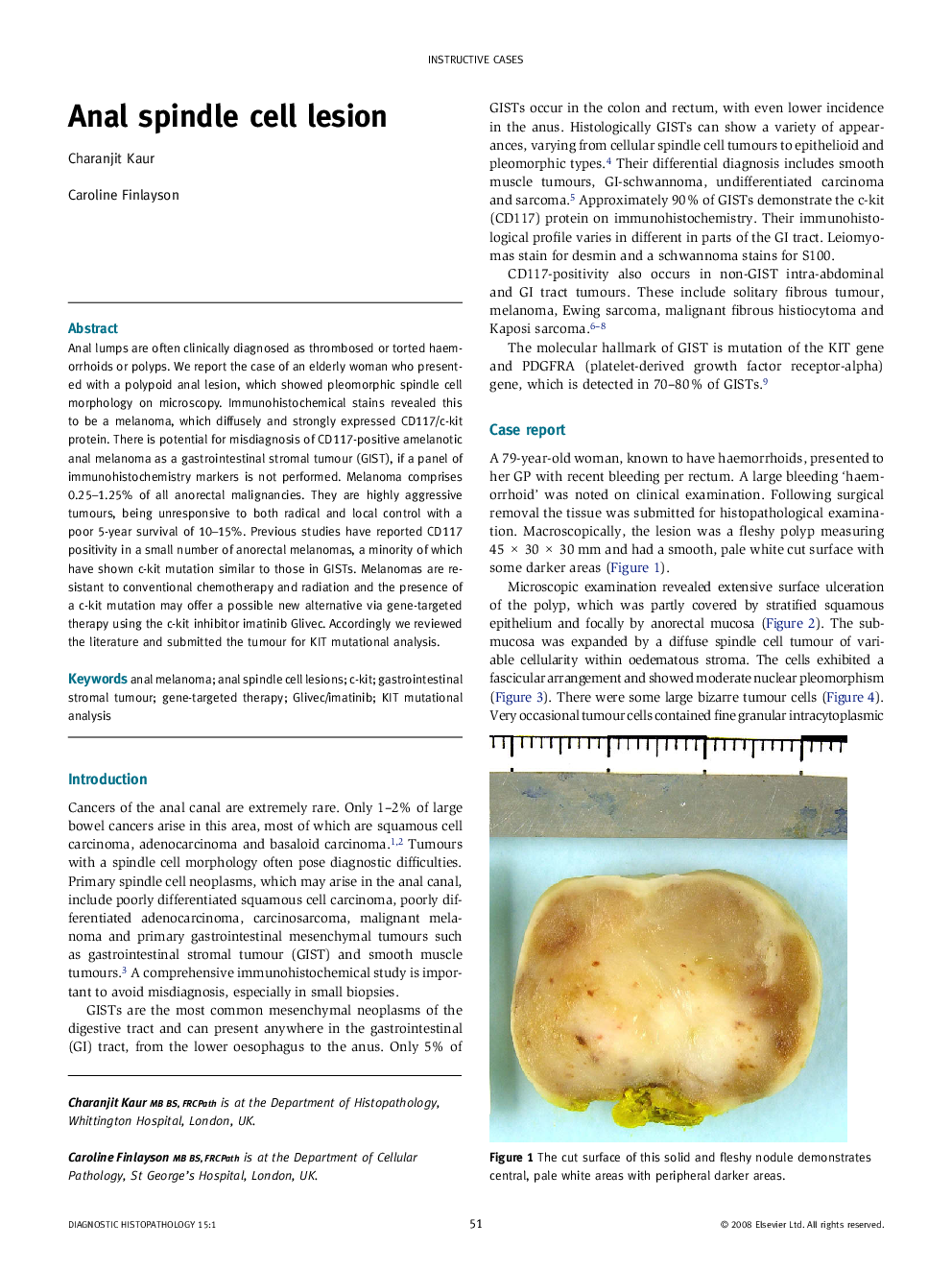| کد مقاله | کد نشریه | سال انتشار | مقاله انگلیسی | نسخه تمام متن |
|---|---|---|---|---|
| 4131660 | 1271254 | 2009 | 4 صفحه PDF | دانلود رایگان |

Anal lumps are often clinically diagnosed as thrombosed or torted haemorrhoids or polyps. We report the case of an elderly woman who presented with a polypoid anal lesion, which showed pleomorphic spindle cell morphology on microscopy. Immunohistochemical stains revealed this to be a melanoma, which diffusely and strongly expressed CD117/c-kit protein. There is potential for misdiagnosis of CD117-positive amelanotic anal melanoma as a gastrointestinal stromal tumour (GIST), if a panel of immunohistochemistry markers is not performed. Melanoma comprises 0.25–1.25% of all anorectal malignancies. They are highly aggressive tumours, being unresponsive to both radical and local control with a poor 5-year survival of 10–15%. Previous studies have reported CD117 positivity in a small number of anorectal melanomas, a minority of which have shown c-kit mutation similar to those in GISTs. Melanomas are resistant to conventional chemotherapy and radiation and the presence of a c-kit mutation may offer a possible new alternative via gene-targeted therapy using the c-kit inhibitor imatinib Glivec. Accordingly we reviewed the literature and submitted the tumour for KIT mutational analysis.
Journal: Diagnostic Histopathology - Volume 15, Issue 1, January 2009, Pages 51–54